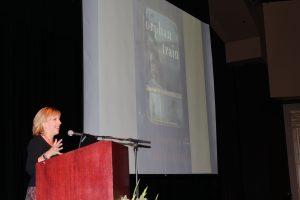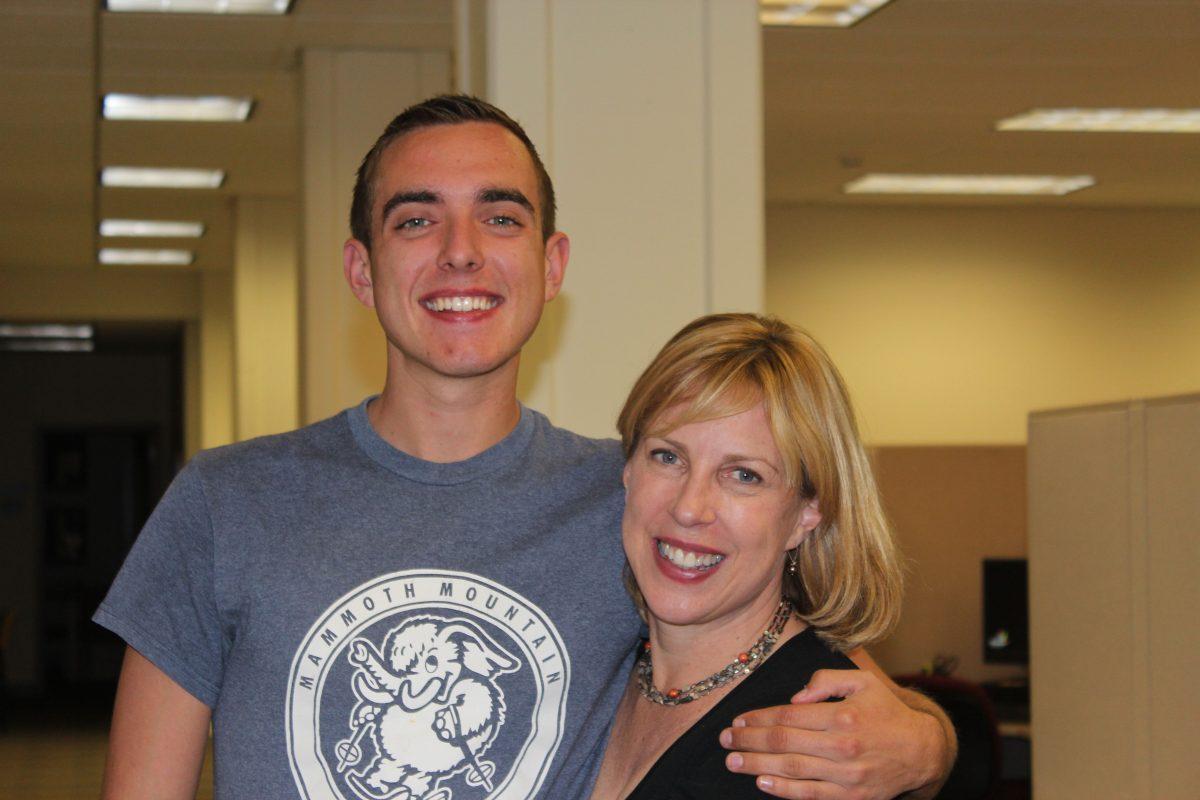Very few people know about the time between the 1850s and the 1920s when orphaned children were shipped across the country in trains to find them adoptive families.
However, Christina Baker Kline’s novel “Orphan Train†is changing that. The book, which has sold more than two million copies, is about a 91-year-old woman with a hidden past as an orphan train rider and a troubled 17-year-old girl in foster care who comes to work for her  and discovers that they have a lot in common.
“Orphan Train†was written to expose the plight of hundreds of thousands of children who lived in extreme poverty. Their suffering was the theme of Kline’s Nov. 4 presentation at Cuesta’s CPAC. During the hour-long event, The New York Times bestselling author explained how bleak life was for many children at the time.
“Children were property. And poor children, pure and simple, were labor,†Kline said to an audience of a few hundred. “Children worked from about the age of four if they were poor, and it was a very hard life.â€
Kline’s inspiration came from an article at her mother in-law’s house in Fargo, North Dakota, where a blizzard forced and her three young children inside for three days. Out of boredom Kline found a book, and in that book was an article about an train full of orphans passing through Jamestown, North Dakota. To her mother in-law’s shock, she saw that her father and his four siblings were all orphans brought to North Dakota by train. This came as a surprise to Kline’s husband because his grandfather was an orphan train rider and he never knew about it.
After reading the article, Kline knew that she was on to something significant. Seven years passed, during which she wrote three other books, but four years ago she decided to start writing “Orphan Train.â€

Kline’s research involved interviewing seven living train riders, reading more than 300 personal narratives, going to four orphan reunions and talking to descendents of orphan train added that she started writing the book just in time because four years ago there were about 150 living train-riders and today there are fewer than 10, all between the ages of 95 and 105.
The orphan trains were a product of rampant poverty in east coast cities during the mid 1800’s. More than 30,000 children lived on the streets of New York City in 1854, according to Kline. There were several factors that made poverty so widespread at the time. The industrial revolution put many low skilled workers out of the job, the civil war left many widows who struggled to support their children and countless immigrants were pouring into New York City.
The orphan train program was started by Charles Loring Brace, who founded the Children’s Aid Society in 1854. The orphanage in New York City immediately filled up, so he came up with the idea of sending children off in trains.
The orphan train program had good intentions, but there were also ulterior motives driving it, according to Kline. Ideally, orphaned children got sent to live better lives with happy families, but that was not the case most of the time.
“Make no mistake—it was always a work program,†Kline said. “These children were going to the midwest to work.â€
There was a huge demand for farm labor in the midwest at the time and the orphan trains provided that labor.
“By far the most desirable children were boys between the ages of 9 and 14 because they were pure labor,†Kline said, “but they were also the most damaged and the most difficult. A lot of them belonged to gangs and then imagine they’re indentured to farmers to the age of 18 or 21. Could you imagine how that went?â€
Often there was conflict between the orphaned children and the farmers and many orphans simply ran away. According to Kline, most of the children were never adopted because the farmers didn’t want them to inherit their land.
The transition was usually rocky even for those who adjusted to their new lives, according to Kline.
“As one train rider said to me, ‘Every single child who rode on an orphan train had been through some tremendous, horrific trauma. Otherwise we would not have been there,’†Kline said.
Orphan train riders had their identities erased and were forced to start anew. Siblings were separated and their past was suppressed. Orphan children and their adoptive families didn’t talk about it due to the stigma.
“That’s one big reason we don’t know much about the trains,†Kline said. “A lot of these children never told their story.â€
Another ulterior motive of the orphan train program was population distribution. At the time, the railroads were building depots in the middle of nowhere, and they needed people to live in sparsely populated areas. According to Kline, the orphan trains stopped after the last rail depot was built in 1929.
Afterward the presentation, Kline sat down with The Cuestonian in an exclusive interview.
During the discussion, Kline explained how the most rewarding part of writing her book was talking to the living train riders. She feels lucky to have been able to talk to them, considering that most of the train riders have passed away since she wrote “Orphan Train.â€
“Being able to hear them talk about their stories was really amazing,†Kline said. “You feel like you’re experiencing a part of history.
“The lesson is to remember that the older generations were once young and that they have stories to tell that might resonate in our day,†Kline said, “and that we need to ask questions before it’s too late of our relatives. Also, they’ve lived through history that we haven’t.â€















